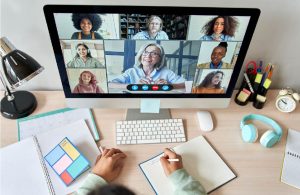3 Frequently Asked Questions about Interactive Learning
Nowadays, learning comes in so many forms and styles that teachers need to step up their approach. If you are an educator, you could be searching for ways to improve your teaching approach, and you might consider creating interactive learning spaces.
Below are three of the most common questions asked about interactive learning.
Is interactive learning better than traditional learning?
Interactive learning and traditional learning primarily differ regarding the engagement of the students. In a traditional class, there is little to no use of techniques for interactive participation. Additionally, interactive learning showcases a hands-on or heads-on approach that promotes conceptual understanding.
A study by Richard Hake dated 1998 explored the effectiveness of lecture-based instruction. The study featured two classes, an interactive engagement class, and a traditional class. Using pre-test and post-test exams, Hake measured “learning gain” and found that interactive courses resulted in more learning than traditional ones.
In 2017, a study by Meguid and Collins analyzed students’ perceptions of the two learning approaches. They found that 95% reported increased participation and 81.7% noted increased motivation to learn. The focus group discussions in the study showed that interactive learning helped the students to have more focus and to understand more information.
There are other studies and materials about the advantages of interactive learning available online as well.
What are examples of interactive teaching styles?
It is crucial to employ different teaching styles to accommodate most of the students’ learning styles.

Here are five of the possible teaching styles for educators:
- Brainstorming – In this style, the educator often asks the student to gather in groups. This style is helpful for creating ideas and making them into reality. The types of brainstorming include structured and unstructured brainstorming, online interaction like chats and forums, and team-idea mapping.
- Buzz session – This style also utilizes the groupings of the students. In each group, the educator instructs the students to contribute thoughts and ideas about a particular topic. This style promotes a high amount of discussion.
- Q&A sessions – In this teaching style, the educator asks the student to write their questions about the topic before the start of the lecture. The teacher may answer the questions at specific portions or the end of the discussion.
- Think, pair, and share – This is a more intimate learning style since it involves two students. The pair will have enough time to exchange thoughts and come up with a conclusion about a problem or a subject matter.
- Incident process – This style involves case studies that show real problems with real people. The cases will help stimulate the students’ critical thinking and encourage them to develop workable solutions.
How can the class discussion become more interactive aside from the activities?
The educator can acquire wireless presentation solutions that will have digital signage, seamless video performance, wireless screen mirroring, and touch interactivity. These features will facilitate more freedom, going around and engaging with students while projecting appropriate visual aids.
Conclusion
Evidence shows that creating interactive learning spaces contribute to better learning. There are different teaching styles such as brainstorming, buzz session, incident process, and Q&A sessions. Lastly, the educator would gain more freedom and encourage participation by having a wireless presentation.













